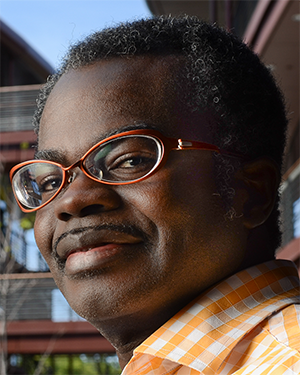The future of AI Hardware: A 3D silicon brain
24th March 2021
Timing : 1 pm EDT
For zoom link to the talks, please email mjgc@mit.edu with your institute email and mention affiliation
For a list of all talks at the NanoBio seminar Series Spring'21, see here
Over the past six decades, conceptions of how a brain computes have evolved from synaptocentric to axocentric to dendrocentric. A synaptocentric network aggregates weighted signals spatially and distributes the nonnegative part. Deep nets realize this concept. An axocentric network filters signals temporally, aggregates the results spatially, integrates over time, and then, when threshold is reached, distributes a spike. Neuromorphic computing realizes this concept. Finally, a dendrocentric network aggregates signals in a spatiotemporally inseparable fashion and distributes a sequence of spikes produced by an ensemble of neurons. This concept could lead to a silicon brain that, scaling linearly with the number of neurons in energy and heat, like a biological brain, would be thermally viable in three dimensions.
Kwabena Boahen
Professor,
Bioengineering and Electrical Engineering, Stanford
Kwabena Boahen (M’89, SM’13, F’16) received the B.S. and M.S.E. degrees in electrical and computer engineering from the Johns Hopkins University, Baltimore, MD, both in 1989 and the Ph.D. degree in computation and neural systems from the California Institute of Technology, Pasadena, in 1997. He was on the bioengineering faculty of the University of Pennsylvania from 1997 to 2005, where he held the first Skirkanich Term Junior Chair. He is presently Professor of Bioengineering at Stanford University, with a joint appointment in Electrical Engineering. He founded Stanford’s Brains in Silicon lab, which develops silicon integrated circuits that emulate the way neurons compute and computational models that link biophysical neuronal mechanisms to cognitive behavior. His research is interdisciplinary, bringing together the seemingly disparate fields of neurobiology and medicine with electronics and computer science. His scholarship is widely recognized, with over ninety publications to his name. These include a cover story in Scientific American featuring his group’s work on a silicon retina and a silicon tectum correctly “wire together” automatically. (May 2005). He has been invited to give over 70 seminar, plenary, and keynote talks. These include a 2007 TED talk, “A computer that works like the brain”, that has been viewed half-a-million times. He has received several distinguished honors, including a Packard Fellowship for Science and Engineering (1999) and a National Institutes of Health Director’s Pioneer Award (2006). He was elected a fellow of the American Institute for Medical and Biological Engineering (2016) and of the Institute of Electrical and Electronic Engineers (2016). In recognition of his group’s work on Neurogrid (2006-12), an iPad-size platform that emulates the cortex in biophysical detail and at functional scale. As this combination hitherto required a supercomputer, Neurogrid resurged interest in neuromorphic computing. These students went on to lead the design of IBM’s TrueNorth chip. In his most recent research effort, the Brainstorm Project, he led a multi-university, multi-investigator team to co-design hardware and software that makes neuromorphic computing much easier to apply. A spin-out from his Stanford group, Femtosense Inc (2018), is commercializing this breakthrough.
Professor,
Bioengineering and Electrical Engineering, Stanford
Kwabena Boahen (M’89, SM’13, F’16) received the B.S. and M.S.E. degrees in electrical and computer engineering from the Johns Hopkins University, Baltimore, MD, both in 1989 and the Ph.D. degree in computation and neural systems from the California Institute of Technology, Pasadena, in 1997. He was on the bioengineering faculty of the University of Pennsylvania from 1997 to 2005, where he held the first Skirkanich Term Junior Chair. He is presently Professor of Bioengineering at Stanford University, with a joint appointment in Electrical Engineering. He founded Stanford’s Brains in Silicon lab, which develops silicon integrated circuits that emulate the way neurons compute and computational models that link biophysical neuronal mechanisms to cognitive behavior. His research is interdisciplinary, bringing together the seemingly disparate fields of neurobiology and medicine with electronics and computer science. His scholarship is widely recognized, with over ninety publications to his name. These include a cover story in Scientific American featuring his group’s work on a silicon retina and a silicon tectum correctly “wire together” automatically. (May 2005). He has been invited to give over 70 seminar, plenary, and keynote talks. These include a 2007 TED talk, “A computer that works like the brain”, that has been viewed half-a-million times. He has received several distinguished honors, including a Packard Fellowship for Science and Engineering (1999) and a National Institutes of Health Director’s Pioneer Award (2006). He was elected a fellow of the American Institute for Medical and Biological Engineering (2016) and of the Institute of Electrical and Electronic Engineers (2016). In recognition of his group’s work on Neurogrid (2006-12), an iPad-size platform that emulates the cortex in biophysical detail and at functional scale. As this combination hitherto required a supercomputer, Neurogrid resurged interest in neuromorphic computing. These students went on to lead the design of IBM’s TrueNorth chip. In his most recent research effort, the Brainstorm Project, he led a multi-university, multi-investigator team to co-design hardware and software that makes neuromorphic computing much easier to apply. A spin-out from his Stanford group, Femtosense Inc (2018), is commercializing this breakthrough.
